
The Benois Building is a building in the center of St. Petersburg, located near the Savior on Spilled Blood, on the corner of the embankment of the Griboyedov Canal and Engineering Street.
Today, the Benois building is part of the architectural complex of the State Russian Museum. Some of the museum's collections are displayed within its walls and temporary (rotating) exhibitions are held.
The project of the Benois building was made in 1910-1912 by architects Leontiy Nikolaevich Benois and Sergey Osipovich Ovsyannikov.
Initially, the building was called the "Palace of Arts" and was intended for exhibitions of various art associations and unions.
The foundation of the building took place on June 27, 1914, but, due to the outbreak of war, the work was suspended. Construction was completed in 1919.
The main facade of the building, decorated with columns, faces the embankment of the Griboyedov Canal.
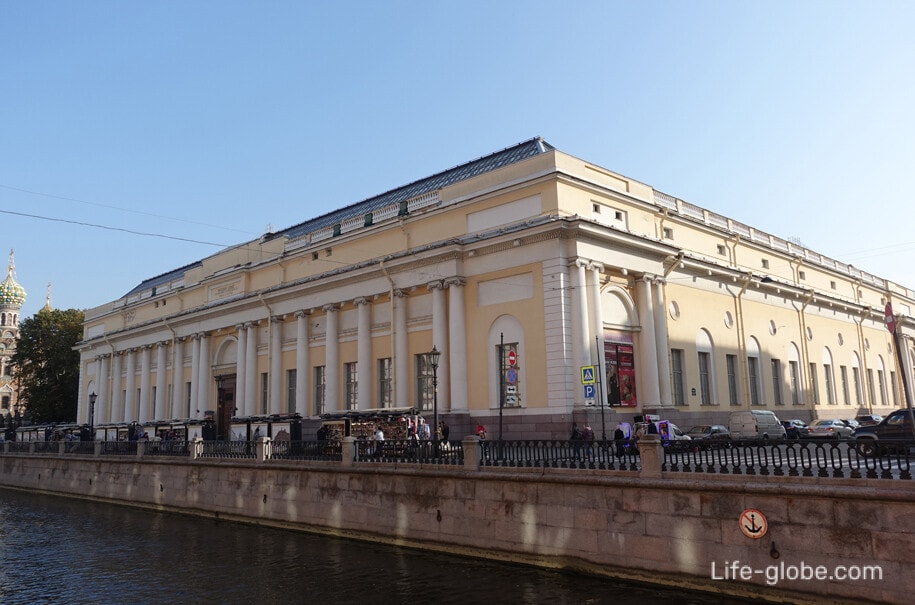
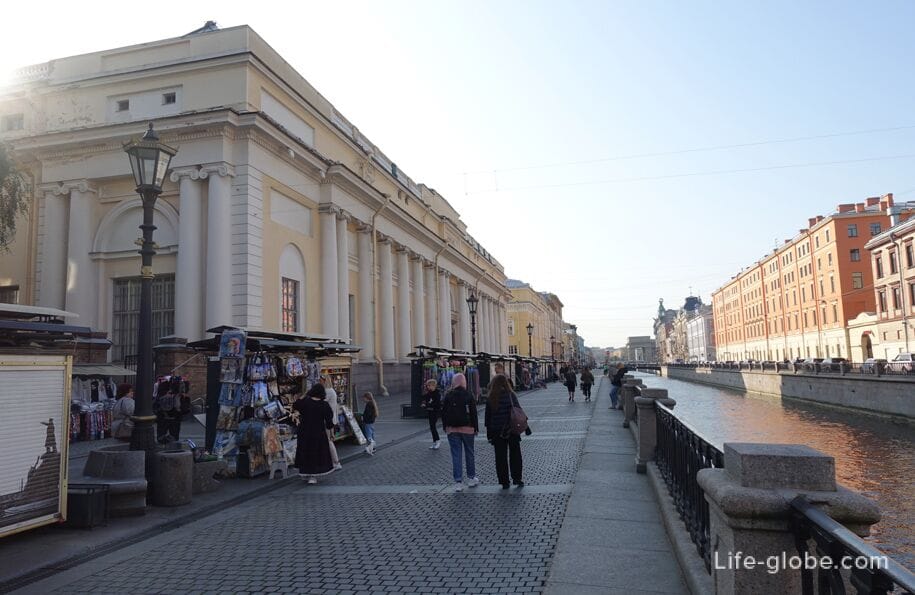
The Benois Building was transferred to the Russian Museum in the early 1930s, and since then it has housed permanent exhibitions of art from the late 19th and early 21st centuries, as well as rooms for temporary exhibitions.
Today, the Benois building is an integral part of the Mikhailovsky Palace, built by the architect Karl Rossi for the son of Emperor Paul I - Grand Duke Mikhail Pavlovich.
After the Great Patriotic War, a special passage was created that connected the wing of the Mikhailovsky Palace with the Benois building. Learn more about the Mikhailovsky Palace...
The main facade of the Mikhailovsky Palace overlooks the Mikhailovsky Garden. Both the palace and the garden, as well as the Benois building, are now part of the Russian Museum. Read more about Mikhailovsky Garden (Mikhailovsky Palace)…
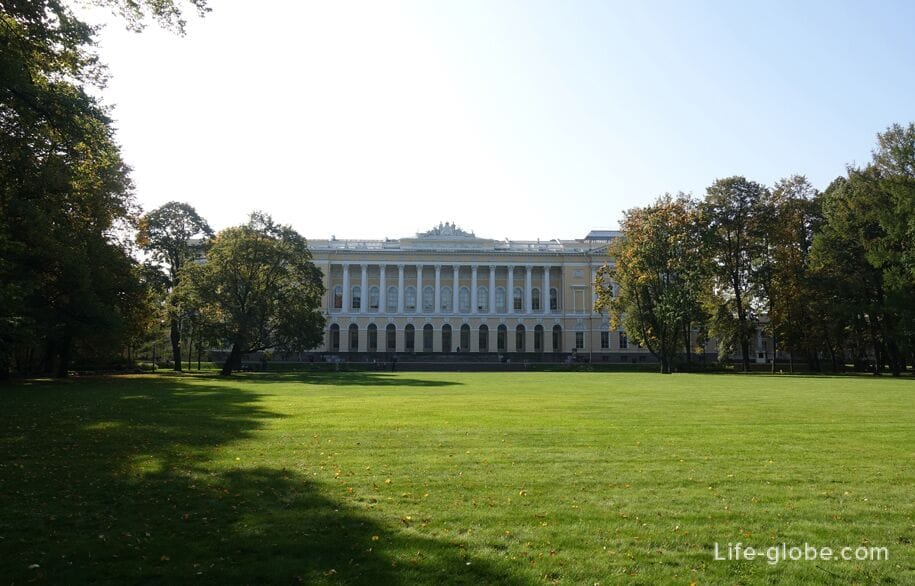
Now the main retrospective exhibition of the State Russian Museum is located in the Mikhailovsky Palace and the Benois Building. Learn more about the Russian Museum...
Exhibitions and expositions in the Benoit building:
- "decorative and applied art in Russia of the 20th century", which includes more than four hundred works of porcelain, glass, majolica, as well as furniture and textiles from the collection of the Russian Museum;


- "Russian art of the late 19th - early 20th centuries", representing a large-scale and vivid picture of the development paths of Russian fine art at the turn of the 19th and 20th centuries, marked by the emergence of new trends and trends, which reflected the more complex perception of the world around.
The section opens with works by artists: late landscapes by I. I. Levitan and A. I. Kuindzhi; historical paintings by A. P. Ryabushkin; genre compositions and portraits by B. M. Kustodiev, F. A. Malyavin, A. E. Arkhipov, etc.;
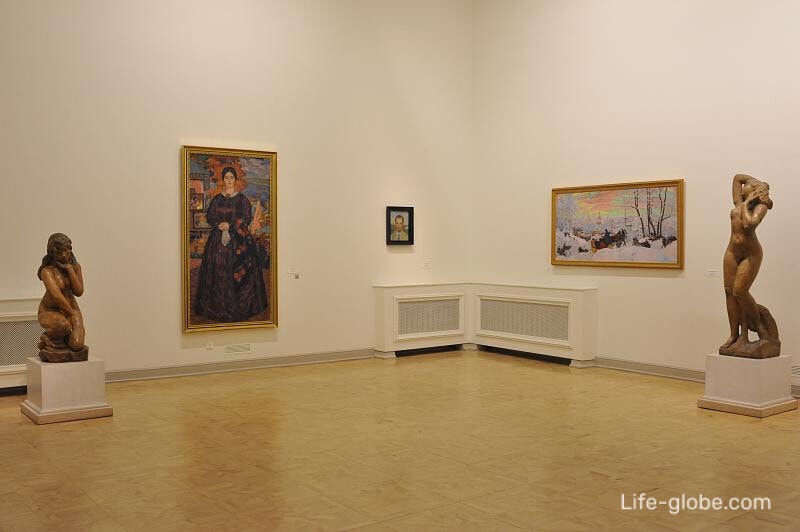
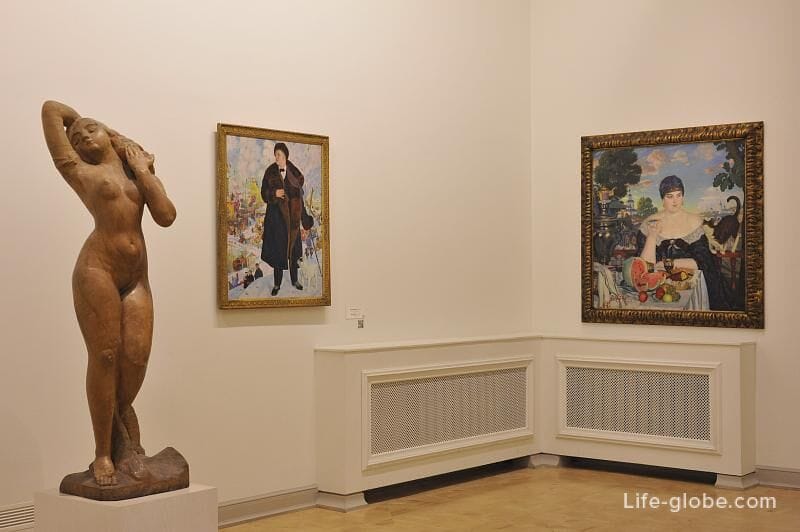
Russian Russian Art of the 20th century, which presents the works of the greatest masters of the association "Jack of Diamonds", the founders of the Russian avant-garde M. Larionov, N. Goncharova, V. Kandinsky, K. Malevich, V. Tatlin, A. Rodchenko, A. Exter, L. Popova, N. Altman, N. Puni and others.
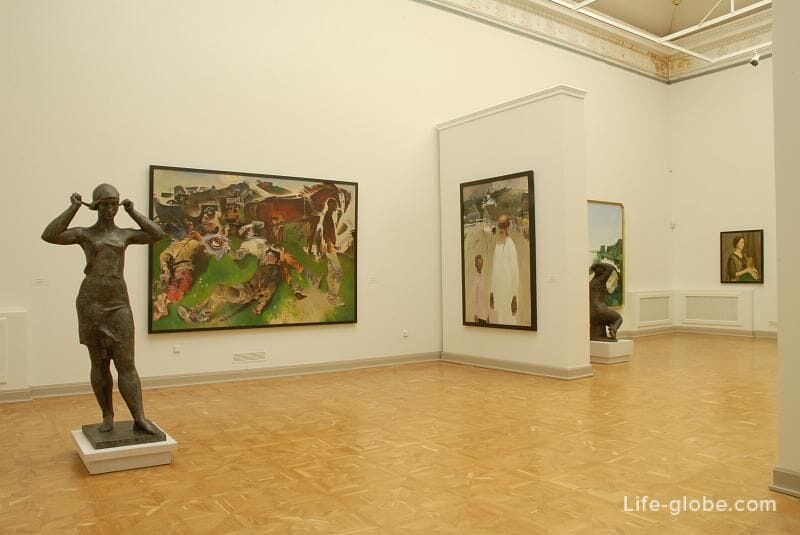
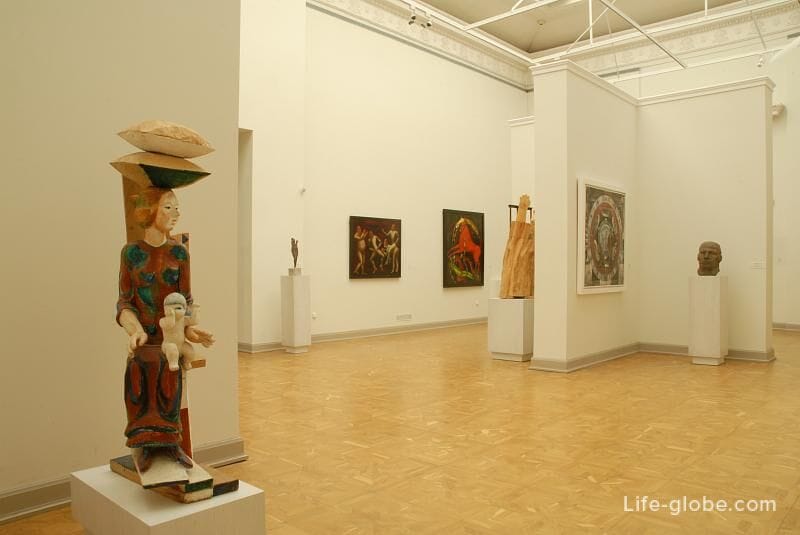
In addition to permanent exhibitions, temporary (rotating) exhibitions are also held in the halls of the Benoit Building.
Address of the Benoisbuilding : Griboyedov Canal Embankment, 2.
The nearest metrostations are Nevsky Prospekt, Gostiny Dvor, and Admiralteiskaya.
Buses: №№ 3, 22, 27, 49, K212. Trolleybuses: №№ 5 and 22.
At the information desks of the Benois Building, in the Mikhailovsky Palace and in Mikhailovsky Castle you can learn about the museum's working hours, temporary exhibitions, events, lectures, classes and concerts held at the Russian Museum.
You can visit the museum in the Benois building by purchasing a separate ticket (only in the building) or a complex ticket and use it to visit the Benois building + other objects of the Russian Museum.
We recommend that you check all the necessary information, including the museum's working hours, ticket prices, exhibitions and events, before visiting the official website of the museum.
Website of the State Russian Museum: rusmuseum.
All accommodation facilities in St. Petersburg, including in the city center and more remote from it, can be viewed and booked here